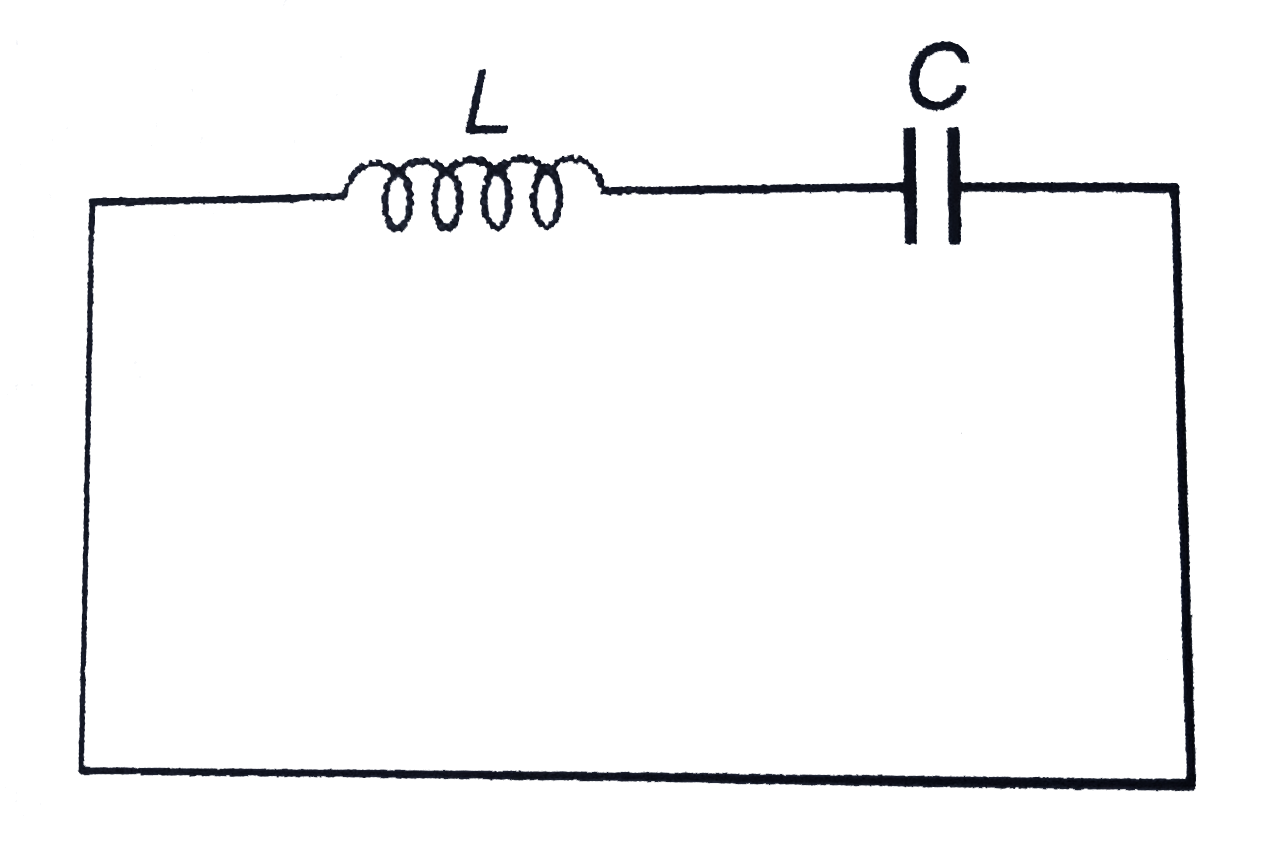In LC circuit the maximum charge in capacitor is q0. Then maximum value of rate of change of current is
q0L−12C−12
q0L−1C−1
q0LC
q0L−1C
To solve the problem of finding the maximum value of the rate of change of current in an LC circuit where the maximum charge in the capacitor is q0, we can follow these steps:
Step 1: Understand the LC Circuit
In an LC circuit, the charge Q on the capacitor varies with time. The relationship can be expressed as:
Q(t)=Q0cos(ωt)
where Q0 is the maximum charge and ω is the angular frequency.
Step 2: Differentiate the Charge to Find Current
The current I in the circuit is the rate of change of charge with respect to time. Therefore, we differentiate Q(t):
I(t)=dQdt=ddt(Q0cos(ωt))=−Q0ωsin(ωt)
Step 3: Find the Maximum Rate of Change of Current
To find the maximum value of the rate of change of current, we need to find the maximum value of dIdt. First, we differentiate I(t):
dIdt=ddt(−Q0ωsin(ωt))=−Q0ω2cos(ωt)
Step 4: Determine the Maximum Value
The maximum value of cos(ωt) is 1. Therefore, the maximum value of dIdt is:
(dIdt)max=Q0ω2
Step 5: Relate Angular Frequency to Inductance and Capacitance
The angular frequency ω is related to the inductance L and capacitance C by the formula:
ω2=1LC
Substituting this into our expression for the maximum rate of change of current gives:
(dIdt)max=Q0(1LC)
Final Result
Thus, the maximum value of the rate of change of current in the LC circuit is:
(dIdt)max=Q0LC
In an LC circuit, the charge Q on the capacitor varies with time. The relationship can be expressed as:
Q(t)=Q0cos(ωt)
where Q0 is the maximum charge and ω is the angular frequency.
The current I in the circuit is the rate of change of charge with respect to time. Therefore, we differentiate Q(t):
I(t)=dQdt=ddt(Q0cos(ωt))=−Q0ωsin(ωt)
To find the maximum value of the rate of change of current, we need to find the maximum value of dIdt. First, we differentiate I(t):
dIdt=ddt(−Q0ωsin(ωt))=−Q0ω2cos(ωt)
The maximum value of cos(ωt) is 1. Therefore, the maximum value of dIdt is:
(dIdt)max=Q0ω2
The angular frequency ω is related to the inductance L and capacitance C by the formula:
ω2=1LC
Substituting this into our expression for the maximum rate of change of current gives:
(dIdt)max=Q0(1LC)
Thus, the maximum value of the rate of change of current in the LC circuit is:
(dIdt)max=Q0LC
Topper's Solved these Questions
Similar Questions
In an oscillating LC circuit, L = 25.0 mH and C = 2.89 μF. At time t=0 the current is 9.20 mA, the charge on the capacitor is 3.80 μC and the capacitor is charging. What are (a) the total energy in the circuit, (b) the maximum charge on the capacitor, and (c) the maximum current? (d) If the charge on the capacitor is given by q= cos(ωt+ϕ), what is the phase angle ϕ? (e) Suppose the data are the same, except that the capacitor is discharging at t= 0. What then is ϕ ?
View SolutionWhat is the capacitance of an oscillating LC circuit if the maximum charge on the capacitor is 1.60 μC and the total energy is 140 μJ?
View Solution
Knowledge Check
In an oscillating LC circuit the maximum charge on the capacitor is Q. The charges on the capacitor when the energy is stored equally between the electric and magnetic field is
AQ2BQ√3CQ√2DQIn an oscillating LC circuit the maximum charge on the capacitor is Q. The charges on the capacitor when the energy is stored equally between the electric and magnetic field is
AQ2BQ√3CQ√2DQEnergy can be stored by an LC circuit oscillating at its natural frequency. Energy stored in a capacitor is in form of electric field between the plates. An inductor stores energy in form of magnetic field. If the inductor connected across capacitor, the voltage across the capacitor will drive the current through inductor, building up a magnetic field around it. The voltage across the capacitor falls to zero as the charge is used up by the current flow. Now the energy stored in the coil's magnetic field induces a voltage across the coil, because inductor opposes the current change. Thus energy required to charge the capacitor is extracted from the magnetic field.

A capacitor of 25μF and inductor of 0.6 H are in an LC circuit. When the charge on capacitor is3×10−5C, what is the rate of change of current:A2 A/sB3 A/sC4 A/sD6 A/s
In an oscillating LC circuit, when 75.0% of the total energy is stored in the inductor's magnetic field, (a) what multiple of the maximum charge is on the capacitor and (b) what multiple of the maximum current is in the inductor?
View SolutionAn L−C circuit consists of an inductor coil withh L=50.0mH and 20.0μF capacitor. There is negligible resistance in the circuit. The circuit is driven by a voltage source with V=V0cosωt. If V0=5.00mV and the frequency is twice the resonance frequency, determine.
a. the maximum charge on the capacitor.
b. the maximum current in the circuit.
c. the phase relationship between the voltages across the inductor, the capacitor and the sourse.
View SolutionIn an oscillating LC circuit the maximum charge on the capacitor is Q. The charges on the capacitor when the energy is stored equally between the electric and magnetic field is
View SolutionAssertion : Angular frequency of LC oscillations is 2rad/s and maximum current in the circuit is 1A. Then, maximum rate of change of current should be 2A/s.
Reason: (dIdt)max=(Imax)ω
View SolutionIn an LC circuit the capacitor has maximum charge q0. The value of (dIdt)max is

View Solution
